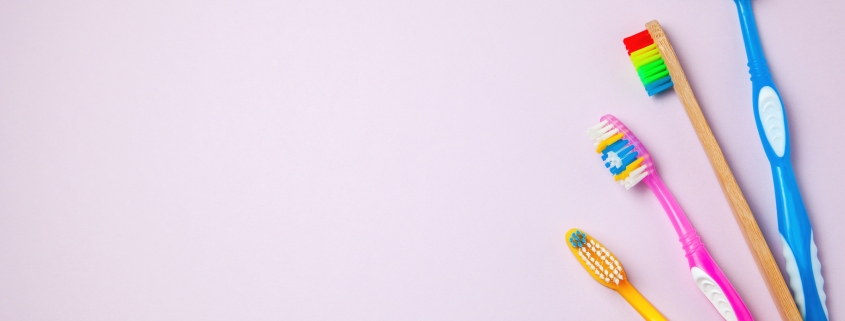All About Toothbrushes
Decades ago, when the nylon hair toothbrush was first invented, consumers did not have many options for choosing a toothbrush, but now the story is completely different. Most stores that sell oral hygiene products have a wide range of different types of toothbrushes, including manual and electric, on their shelves.
A good toothbrush can change bad health habits into good oral health habits. Without daily brushing and flossing, teeth and gums may become particularly vulnerable to tooth decay, plaque, and plaque and even gum disease. Use the instructions below to help you brush properly to prevent these problems from occurring. The more you love your toothbrush, the more likely you are to brush it regularly. We are taught from childhood that regular brushing is one of the best ways to keep our teeth and gums healthy. But what is the best toothbrush?
There are complete dental products that are environmentally friendly. You may even have heard of toothbrushes called natural toothbrushes made from the roots of the Arak tree. Other types of natural toothbrushes contain brown bristles that appear to be softer than nylon bristles. Although you may be curious to try natural toothbrushes, you should keep in mind that little research has been done on their effectiveness (or harmfulness). Natural toothbrushes can also cost more and break down faster than standard toothbrushes.
There are certain characteristics that you should consider when choosing any type of toothbrush, whether manual or electric.
Size: The best toothbrush for you is a toothbrush that has a head size that allows easy access to all surfaces of your teeth. For most adults, a toothbrush that is about 1 cm wide and 2.5 cm long is the most effective and simplest toothbrush to use. Although large toothbrushes are available, once you use them you will find that some areas, such as the sides and back of the teeth, are difficult to brush. The length of the toothbrush handle should be long enough that you can hold it comfortably in your hand.
Types of toothbrush bristles: If you go to the pharmacy to buy a hand toothbrush or an electric toothbrush, you can choose a toothbrush with soft, medium or hard nylon bristles. For the vast majority, a soft toothbrush will be the easiest and safest choice. If you brush and brush your teeth too hard, medium to hard brushes can actually damage the gums, root surface, and protective enamel. To further protect your teeth when you buy a toothbrush, make sure that the toothbrush brushes you choose have a round surface.
Ask your dentist to suggest a good brand to make sure your toothbrush has undergone rigorous health and safety testing.
For hand toothbrushes, the presence of a seal ensures that the toothbrush brushes are safe, the toothbrush handle is suitable for daily use, the toothbrush hair does not fall out of the toothbrush during daily brushing, and in the early stages of using the toothbrush, plaque and gum disease are reduced. In addition, electric toothbrushes that have a seal must also perform a safety test in an independent laboratory and prove through practical tests that the toothbrush is suitable for use on oral tissue as well as any dental instrument.
As long as you brush your teeth regularly using the right cleaning techniques, you should be able to remove plaque with your hand or electric toothbrush and keep your gums healthy. Studies have shown that there is not much difference between a hand toothbrush and an electric toothbrush, and both types can be effective if used properly. An electric toothbrush can be ineffective if used improperly. However, electric toothbrushes may be suitable in some situations, for example for people who are less skilled or who find it difficult to use a hand toothbrush. An electric toothbrush can be suitable for patients with severe rheumatoid arthritis or those recovering from a stroke. The electric toothbrush is also suitable for people who want to brush their teeth hard, which can damage the gums and teeth.
When it comes to choosing the best toothbrush for your child, it is important to choose a toothbrush that he uses regularly and appropriately. There are a variety of handy and electric options for children, and they are available in a variety of colors, and often use children’s favorite characters from classic stories and popular cartoons. Some types of toothbrushes even play music to help your child know how long to brush.
If you have wired your teeth, you can use a special orthodontic toothbrush with V-shaped brushes. These toothbrushes are designed to thoroughly clean around wires and braces. There is also a type of toothbrush called the End-Tuft toothbrush, which has a very small head with several round nylon brushes and can be used to clean around braces, uneven teeth, viable roots of mill teeth, and dental bridges and implants. This toothbrush should be used as a supplement after regular brushing.
After daily use, your toothbrush can lose its effectiveness and even become a breeding ground for germs, fungi, and bacteria. Who wants this? To get the most benefit from brushing, change your toothbrush at least once every 1 to 3 months, and if you have recently caught a cold or infection, you may have transmitted germs to your toothbrush, so be sure to use a new toothbrush.

